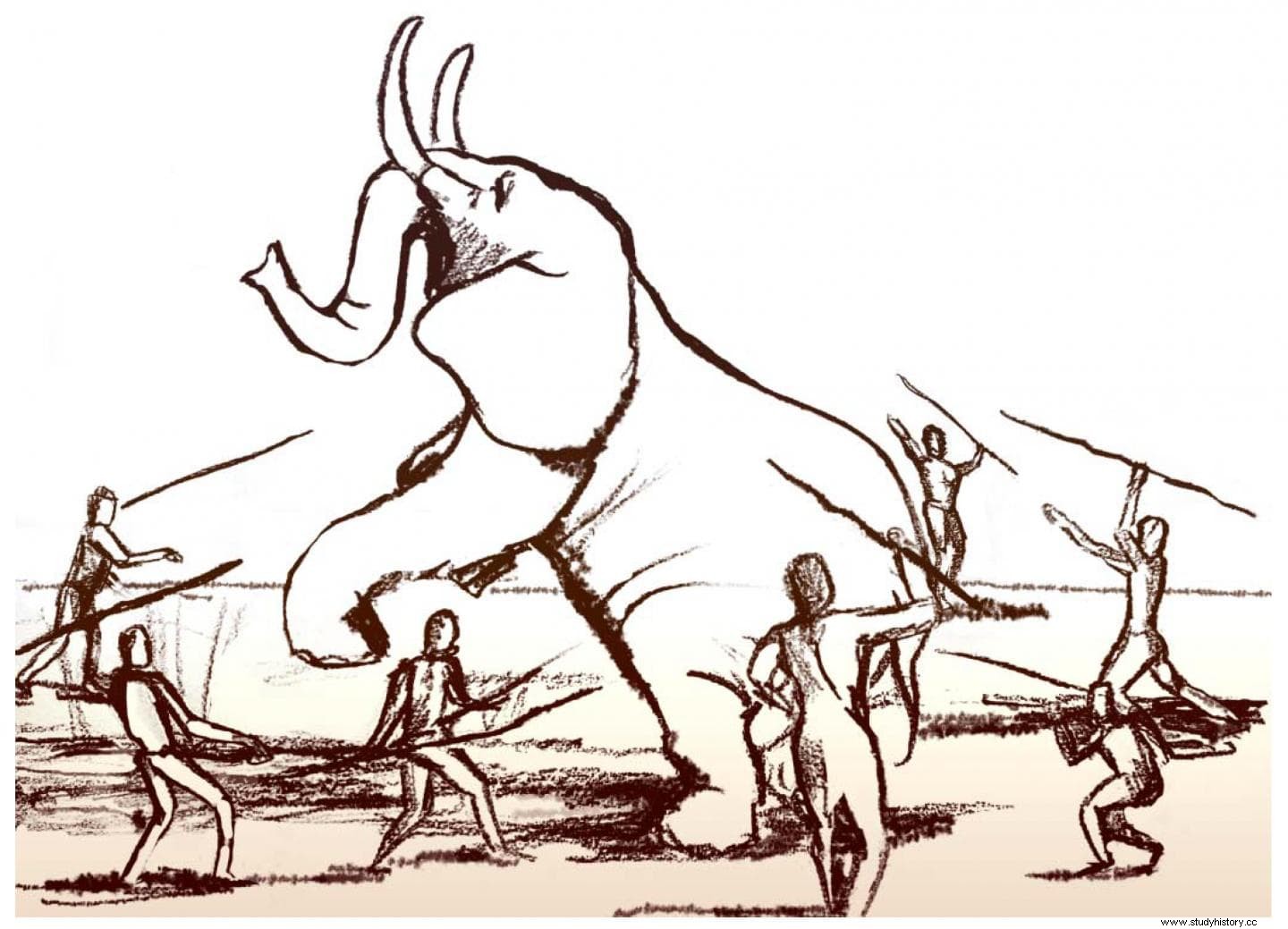An article by Dr. Miki Ben-Dor and Professor Ran Barkai, from the Jacob M. Alkow Department of Archeology at Tel Aviv University, proposes an original unifying explanation of the physiological, behavioral and cultural evolution of the human species, from its inception. first appearance about two million years ago, until the agricultural revolution (about 10,000 BC).
According to the document, humans developed as hunters of large animals, which caused their extinction. By adapting to hunting small, fast prey, humans developed greater cognitive abilities, evidenced by the most obvious evolutionary change:the increase in brain volume from 650 cubic centimeters to 1,500 cubic centimeters. To date, no unifying explanation has been proposed for the main phenomena of human prehistory. This novel theory was published in Quaternary Journal .
In recent years, increasing evidence has accumulated that humans were a major factor in the extinction of large animals and consequently had to adapt to hunting smaller animals, first in Africa and then throughout the world. other parts of the world. In Africa, 2.6 million years ago, when humans emerged, the average size of land mammals was close to 500 kg. Just before the arrival of agriculture, this figure had been reduced by more than 90%, to several tens of kilos.
According to the researchers, the decrease in the size of the game and the need to hunt small and fast animals forced humans to show cunning and daring, an evolutionary process that demanded a larger volume of the human brain and that later led to the development of language that allowed the exchange of information about where prey could be found. The theory states that all means served an end:the conservation of body energy.
The researchers show that, throughout most of their evolution, early humans were apex (top) predators, specializing in hunting large animals. Representing the majority of biomass available for hunting, these animals provided humans with high levels of fat, an essential source of energy, and allowed for higher energy yields than small game.
In the past, six different species of elephant lived in Africa and accounted for more than half of the biomass of all herbivores hunted by humans. Early evidence from East Africa indicates that homo sapiens it only appeared in that area after the number of elephant species in certain regions declined considerably. Comparing the size of animals found in archaeological cultures, representing different species of humans in East Africa, southern Europe and Israel, the researchers found that in all cases there was a significant decrease in the prevalence of animals that they weighed more than 200 kg, along with an increase in the volume of the human brain.
We correlate the increasing volume of the human brain with the need to be smarter hunters explains Dr. Ben-Dor. For example, the need to hunt dozens of gazelles instead of one elephant placed prolonged evolutionary pressure on human brain functions, which now expended much more energy on both movement and thought processes.

The hunting of small animals, constantly threatened by predators and therefore very quick to flee, requires a physiology adapted to the chase, as well as more sophisticated hunting tools. Cognitive activity is also increased, as fast tracking requires rapid decision-making, based on phenomenal knowledge of animal behavior, information that must be stored in a larger memory.
The evolutionary adaptation of humans was very successful says Dr. Ben-Dor. As the size of animals continued to decline, the invention of the bow and arrow and the domestication of dogs allowed for more effective hunting of medium and small animals, until these populations also declined. Towards the end of the Stone Age, as animals became ever smaller, man had to expend more energy on hunting than he was able to replenish. In fact, it was then that the Agricultural Revolution took place, which involved the domestication of both animals and plants. As humans moved into permanent settlements and became farmers, their brain size decreased to its current volume of 1,300-1,400 cubic centimeters. This happened because, with domesticated plants and flightless animals, it was no longer necessary to devote the most outstanding cognitive abilities to the task of hunting .
According to Barkai, while the chimpanzee brain, for example, has been stable for 7 million years, the human brain tripled, reaching its largest size about 300,000 years ago. In addition to brain volume, evolutionary pressure caused humans to use language, fire, and sophisticated tools like the bow and arrow, adapt their arms and shoulders to throwing and throwing tasks and their bodies to prolonged pursuit, improve their stone tools, tamed dogs, and ultimately also tamed their own game and farming.
You have to understand that our perspective is not deterministic. Humans have brought this problem upon themselves. By focusing on hunting the largest animals, they caused the extinctions. Wherever the human being appeared, be it homo erectus or homo sapiens, we saw, sooner or later, the mass extinction of large animals. Dependence on large animals had its price. Human beings undermined their own livelihood. But while other species, like our cousins the Neanderthals, became extinct as their large prey disappeared, Homo sapiens decided to start over, this time relying on agriculture .
